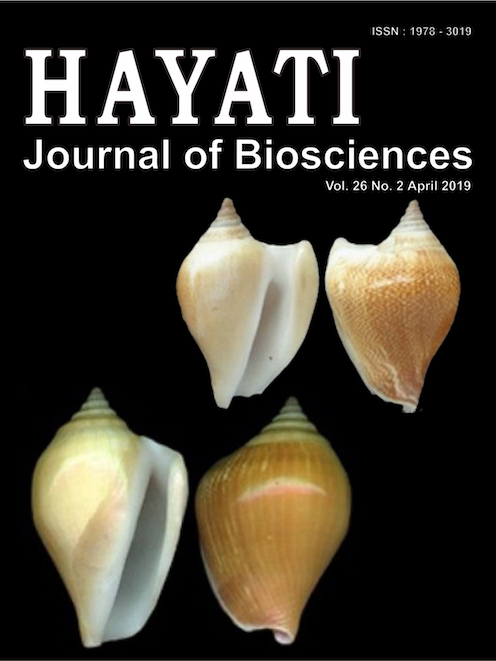Tropical Peatland Identification using L-Band Full Polarimetric Synthetic Aperture Radar (SAR) Imagery (Study Case: Siak Regency, Riau Province)
Abstract
From previous research reported that tropical peatland is one of terrestrial carbon storage in Earth, and has contribution to climate change. Synthetic Aperture Radar (SAR) is one of remote sensing technology which is more efcient than optical remote sensing. Its ability to penetrate cloud makes it useful to monitor tropical environment. This research is conducted in a tropical peatland in Siak Regency, Riau Province. This research was conducted to identify tropical peatland in Siak Regency using polarimetric decomposition, unsupervised classifcation ISODATA, and Radar Vegetation Index (RVI) from SAR data that had been geometrically and radiometrically corrected. Polarimetric decomposition Freeman-Durden was performed to analyze radar backscattering mechanism in tropical peatland, which shows that volume and surface scattering was dominant because of the presence of vegetation and open area. Unsupervised classifcation ISODATA was then performed to extract “shrub class”. By assessing its accuracy, the class that represents shrub class in reference map was selected as the selected “shrub class”. RVI then was calculated using a certain formula. Spatial analysis was then conducted to acquire certain information that average value of RVI in tropical peatland tend to be higher than in non-tropical peatland. By integrating selected “shrub class” and RVI, peat classes were extracted. The best peat class was selected by comparing with peatland referenced map which is acquired from the Indonesian Agency for Agricultural Resources and Development (IAARD) using error matrix. In this research, the best peat class yielded 73.5 percent of Producer’s Accuracy (PA), 81.6 percent of User’s Accuracy (UA), 66.1 percent of Overall Accuracy (OA), and 0.1079 of Kappa coefcient (Ks).Downloads
HAYATI J Biosci is an open access journal and the article's license is CC-BY-NC. This license lets others distribute, remix, tweak, and build upon author's work, as long as they credit the original creation. Authors retain copyright and grant the journal/publisher non exclusive publishing rights with the work simultaneously licensed under a https://creativecommons.org/

























.png) IPB University
IPB University Department of Biology
Department of Biology The Indonesian Biological Society
The Indonesian Biological Society 

